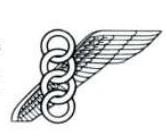Warja Lavater
Swiss artist and illustrator (1913–2007) From Wikipedia, the free encyclopedia
Warja Lavater (28 September 1913 – 3 May 2007) was born in Winterthur, Switzerland. She was a Swiss artist and illustrator noted primarily for working in the artist's books genre by creating accordion fold books that re-tell classic fairy tales with symbols rather than words (or even pictures).[1][2]
Warja Lavater | |
|---|---|
 | |
| Born | Warja Lavater 28 September 1913 |
| Died | 3 May 2007 (aged 93) Zurich, Switzerland |
| Nationality | Swiss |
| Education | Graphic arts |
| Known for | Artists' Books |
| Movement | Modernism, Bauhaus, Arts and Crafts |
Personal life
Summarize
Perspective


Lavater spent the first nine years of her life in Moscow and Athens. In 1922, her mother (the author Mary Lavater-Sloman) and father (Emil Lavater, an engineer) settled the family back in Winterthur. After attending High School, Lavater studied graphic arts in Zurich from 1931 to 1935 at the Fachklasse für Grafik an der Kunstgewerbeschule Grafik (School of Applied Arts). It was here, in 1932, that she began studying under Ernst Keller in a class of 28 of which 7 were women. Later in life, Lavater recalled this training:
What we were learning was design, and so we began with the most important thing, drawing. Where do you put a sign in a rectangle? What is the standard solution to this exercise? Should the strongest element be the sign or the drawing? How can both be distinguished at a distance, yet integrated in a composition? [5]
Studying in Stockholm, Basel, and Paris, she opened her own studio for applied design in Zurich in 1937 with Gottfried Honegger, her future husband. It was here that Lavater embarked on her first profession as a designer of symbols, logos, and trademarks. Among her initial creations were the three keys logo of the Schweizerischen Bankverein (Swiss Bank Corporation- which is now used by its successor, Swiss global financial services company UBS AG)[3] and the logo for the Swiss National Exhibition of 1939.[4]
After marrying Honegger in 1940, she bore two daughters: Bettina (1943) and Cornelia (1944).
From 1944 to 1958 she worked extensively with the young person's magazine Jeunesse designing the covers, supplying illustrations, and being responsible for typography.[6]
Moving to New York City in 1958, she began designing scientific illustrations for Dell Publishing's Visual series. It was during this early period in New York that Honegger-Lavater became influenced by American street advertising and began to utilize pictograms as graphic representations of linguistic elements in her work. In 1962, the New York City Museum of Modern Art published her William Tell as a single sheet lithograph, accordion folded in the "Leporello" style,[7] with a legend listing the meanings of the various symbols (e.g., a single blue dot represents William Tell). The story proceeds chronologically as the book unfolds, and is told entirely by using the symbols without words. She produced a growing number of similar works throughout the rest of her career.
By 1995 she was creating videos of colors and symbols moving across a screen, set to music.
At the time of her death, she was retired and residing outside of Zurich. She is interred at the Fluntern Cemetery in Zürich.[8]
Her artistic estate is held by the Zürich Central Library.[9]
Honegger-Lavater was a direct descendant of the Swiss poet and physiognomist Johann Kaspar Lavater.[10]
Early work in artists' books
Lavater's William Tell and Edward Ruscha's book Twentysix Gasoline Stations were both published in 1962 (though in later editions Ruscha's copyright is given as 1963). Ruscha's book has been cited by some as the first modern artist's book,[11] though there were actually several other artists working with the book form at the same time. This claim can now be contested noting that Lavater's work, as well as that of another Swiss-German artist, Dieter Roth, preceded Ruscha.
Starting in 1963, the Paris-based publisher Adrien Maeght began publication of a series of her folding books broadly entitled Imageries. These books consist of classic fairy tales from the Brothers Grimm, Charles Perrault, and Hans Christian Andersen. These were also done as accordion-folded books with stories told using symbols rather than written language.
Educational influence
Lavater's work has been used by educators in the areas of artistic development and literacy. The National Library of France has encouraged children to explore artistic expression using the techniques created by Lavater.[12] Faculty at the University of Erfurt have produced two pedagogical guides for teaching literacy and creativity to young children using Lavater's version of the classic fairy tale, Snow White (Schneewittchen) [13] and the German fairy tale Hans in Luck (Hans im Glück).[14]
Works
Prints

- 2300 years of medical costume : distinctive garb of the medical and related professions from the time of Hippocrates to the Napoleonic era. North Chicago, Ill. : Abbott Laboratories, 1962 (OCLC 5734427)
- Chacun sa chimère : sept eaux-fortes; Portfolio with 5 signed dry point etchings combined with color lithography. Paris : A. Maeght, 1984. (OCLC 80256726)
Books
| Authored, illustrated, contributed, and edited (50+ items) |
|---|
|
Videos

- Design : Warja Lavater based on the work of Charles Perrault
- Graphics Production : Mac Guff Ligne
- Composer : Pierre Charvet
Music
- Liedli für Mutter und Kind für eine Singstimme und Klavier (co-composed with Gustav Kugler), Zollikon-Zürich :; Sämann-Verlag, 1944 (OCLC 82351484)
Awards
- Imagina 1995 (held by Institut National de l'Audiovisuel) awards for Les Imageries (video 1995)
- Pixel-INA award in the Art category
- European award of Media Invest Club
- "meilleure bande son" (best soundtrack)[15]
- Nominee. Hans Christian Andersen Medal (Illustration) 1992[16]
Exhibitions
| Years and locales where artist exhibited (50+ entries) |
|---|
|
References
Sources
External links
Wikiwand - on
Seamless Wikipedia browsing. On steroids.
